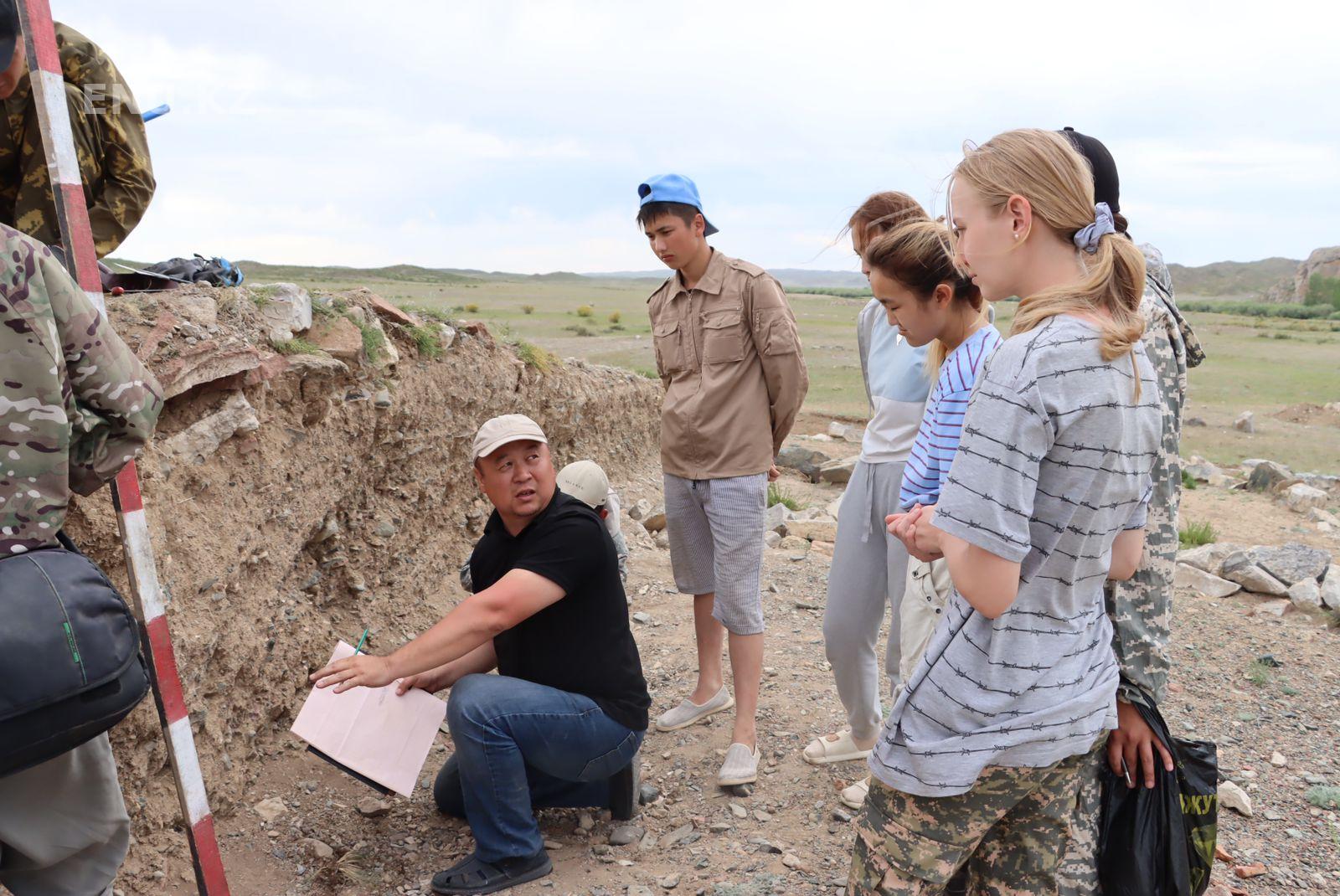A giant pyramid-shaped structure from the Bronze Age, which is around 4,000 years old, and is linked to a horse cult, has been found in the ochre-tinted earthen steppes of Kazakhstan. After nearly ten years of research and excavation, this massive steppe pyramid in Kazakhstan, dating back to the 2nd millennium BC, remained largely unknown for many centuries. Its discovery is particularly thrilling as nothing similar has ever been found in the vast Central Asian steppes.

Archaeologists from Eurasian National University (ENU) uncovered this pyramid-shaped formation in the Kyrykungir excavation area, located close to the village of Toktamys in Kazakhstan’s Abay area. The area is home to ancient burial grounds.
Since 2014, archaeologists have been excavating the site and have come across a collection of ancient graves belonging to the Hun and Saka people. These graves have yielded many interesting artifacts, such as clay pots, food offerings, and tiny bronze balls.
In a recent press release, Eurasian National University announced that evidence of an ancient hexagonal pyramid has been uncovered by archaeologists. This pyramid is believed to date back to the early Bronze Age, approximately 2000 BC.
“The steppe pyramid is built with great precision, it is hexagonal,” explained Ulan Umitkaliyev, Head of ENU’s Archaeology and Ethnology Department, in that press release. “There are thirteen meters and eight rows of stones between each face. It is a very sophisticated complex structure with several circles in the middle. The exterior walls of the structure of this complex are dominated by images of various animals, especially horses.”
The pyramid in Kazakhstan and the links to ‘the cult of the horse’

Photographs reveal a single side of the structure. On each edge of the wall stands a bigger, black stone in an upright position, with one flat side facing outward. In the middle, a distinct kind of rock shapes the impressive outer wall.
Umitkaliyev states that the outer walls of the structure are adorned with pictures of various animals, especially horses. The decorations, together with the horse bones found close to the pyramid, revealed a link between pyramid and what he referred to as “the cult of the horse.”
Umitkaliyev has pointed out that the presence of pottery and gold earrings, as well as other pieces of jewelry, indicate that the pyramid was the hub of culture during ancient times.
Kazakhstan’s Ministry of Science and Higher Education has shared another picture of a less well-maintained area of the pyramid, which displays a number of walls that are beginning to decay.

Painted astragals of the Bronze Age
A study published in The Volga River Region Archaeology from 2021 also discussed the Kyrykungir burial grounds in East Kazakhstan. The excavation at the site revealed two sets of astragals with signs of colored pigments.
Archaeologists were able to establish a timeline for the grave sites discovered, dating them back to the 12th to 13th centuries BC, based on the layout of the graves and the environment in which they were found.
The research includes information derived from the study of animal remains (archaeozoological analysis) and an examination of the painted surface of items (alchiks) using SEM-EDX analysis. Through this analysis, the types of animals used for the astragal pieces have been identified, showing a mix of both domestic and wild species. Different chemical mixtures used in the paints that covered the pieces, as well as evidence of paint repair, were found.



